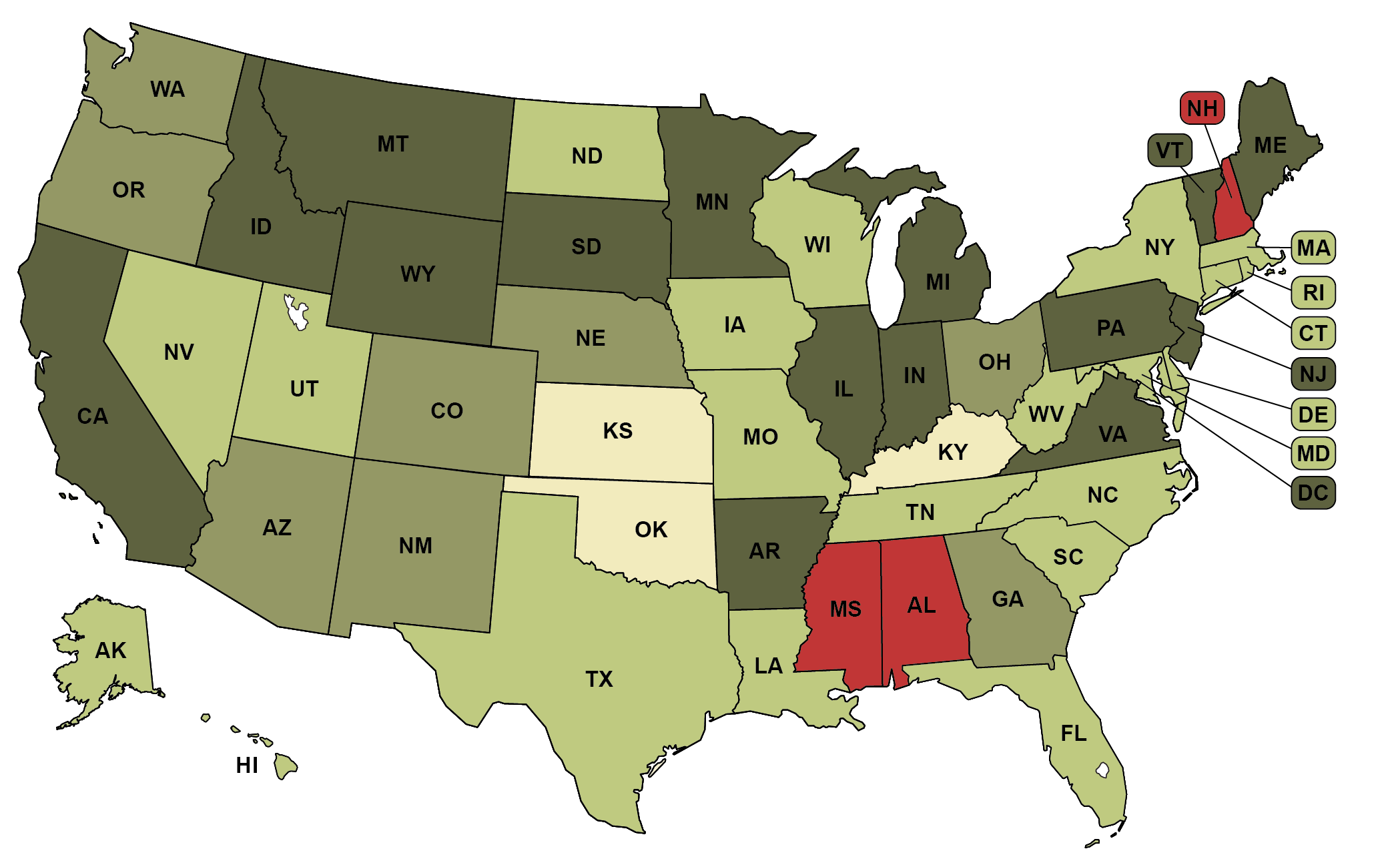Almost all states offer some form of early voting, but the length of the early voting period varies by state. Our scoring includes states that offer “in-person absentee voting,” which is a process by which a voter completes an absentee ballot at a polling place. States that offer in-person absentee voting but require an “excuse” to vote absentee have been scored 0. Hours and locations may vary by county. These laws are applicable to general elections only.
-
State early voting period is more than 22 days
(14 states)
-
State early voting period is 15 to 21 days
(8 states)
-
State early voting period is 7 to 14 days
(22 states + D.C.)
-
State early voting period less than 7 days
(3 states)
-
State does not offer early voting or excuse is required
(3 states)
Recommended citation: Movement Advancement Project. "Early Voting Availability." https://www.mapresearch.org/democracy-maps/early_voting_period. Accessed [day of access]
Breakdown by Population
*Note: These percentages reflect the voting-eligible population, as reported by the United States Election Project.
33 % of population lives in states whose early voting period is more than 22 days
16 % of population lives in states whose early voting period is 15 to 21 days
45 % of population lives in states whose early voting period is 7 to 14 days
3 % of population lives in states whose early voting period is less than 7 days
3 % of population lives in states that does not offer early voting or excuse is required


